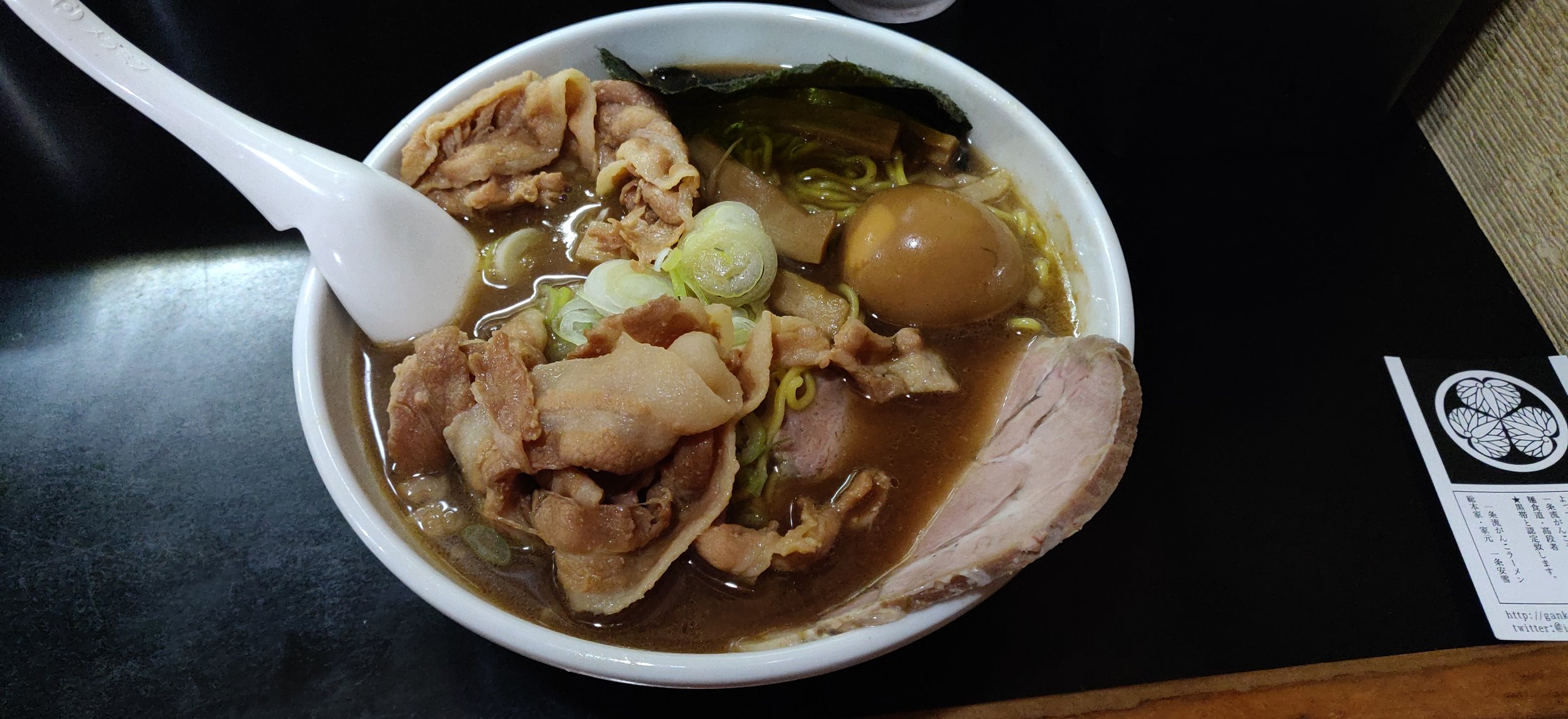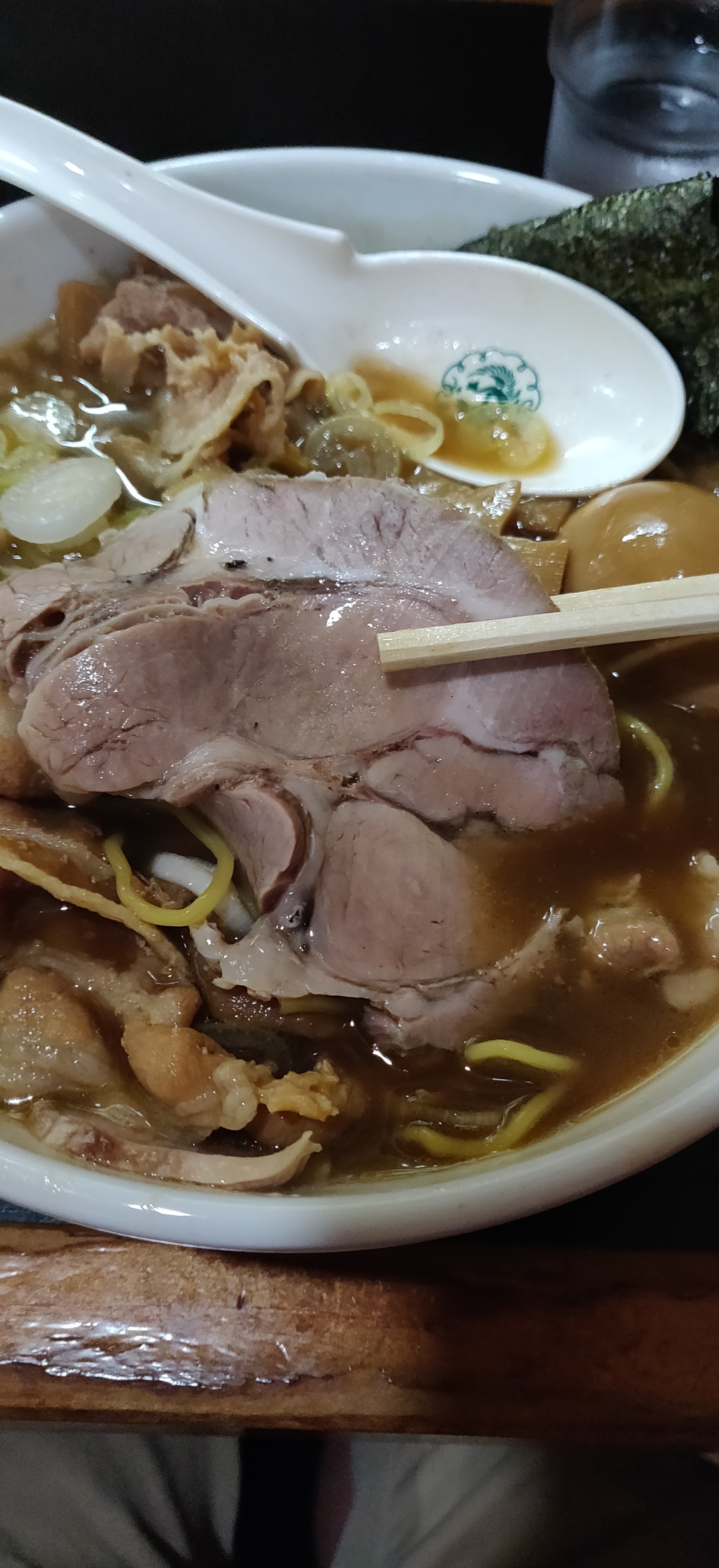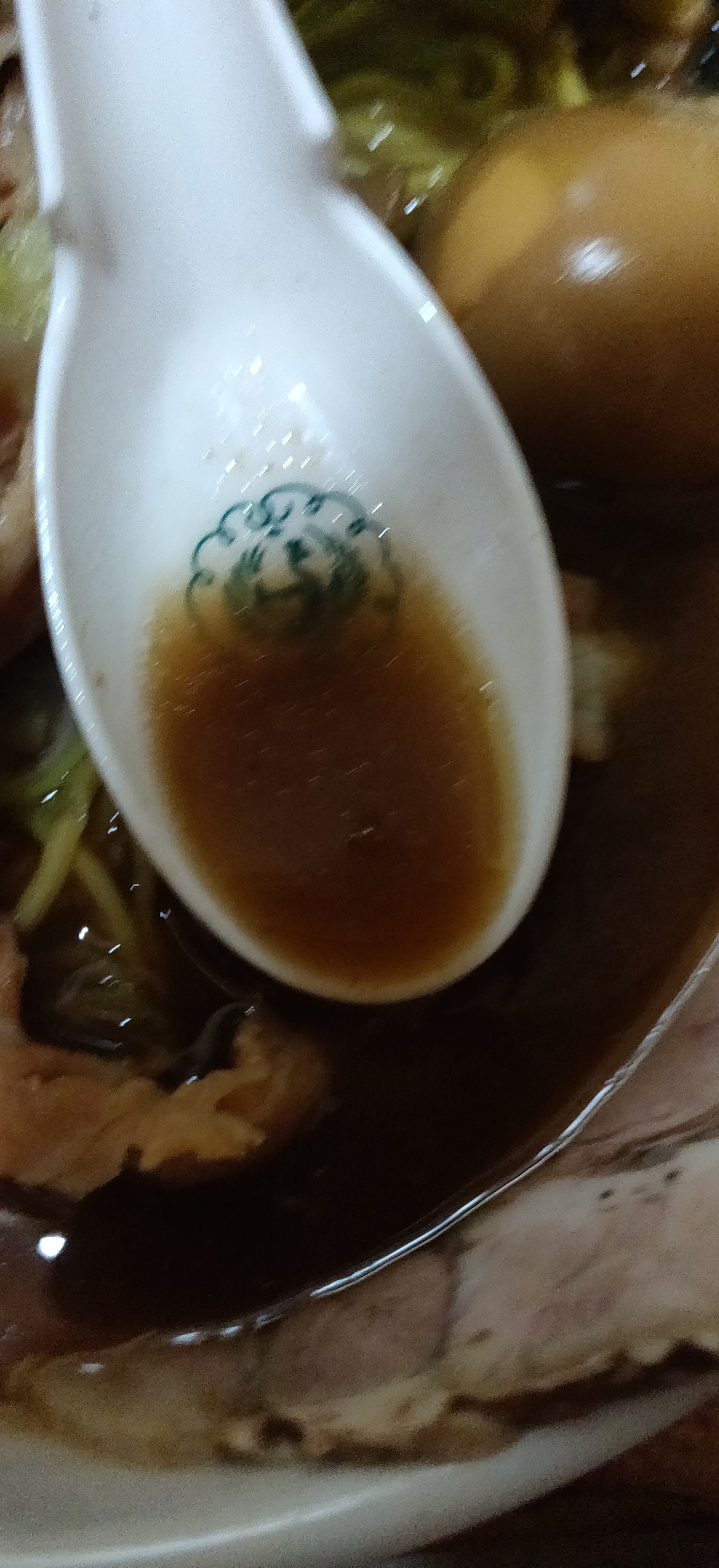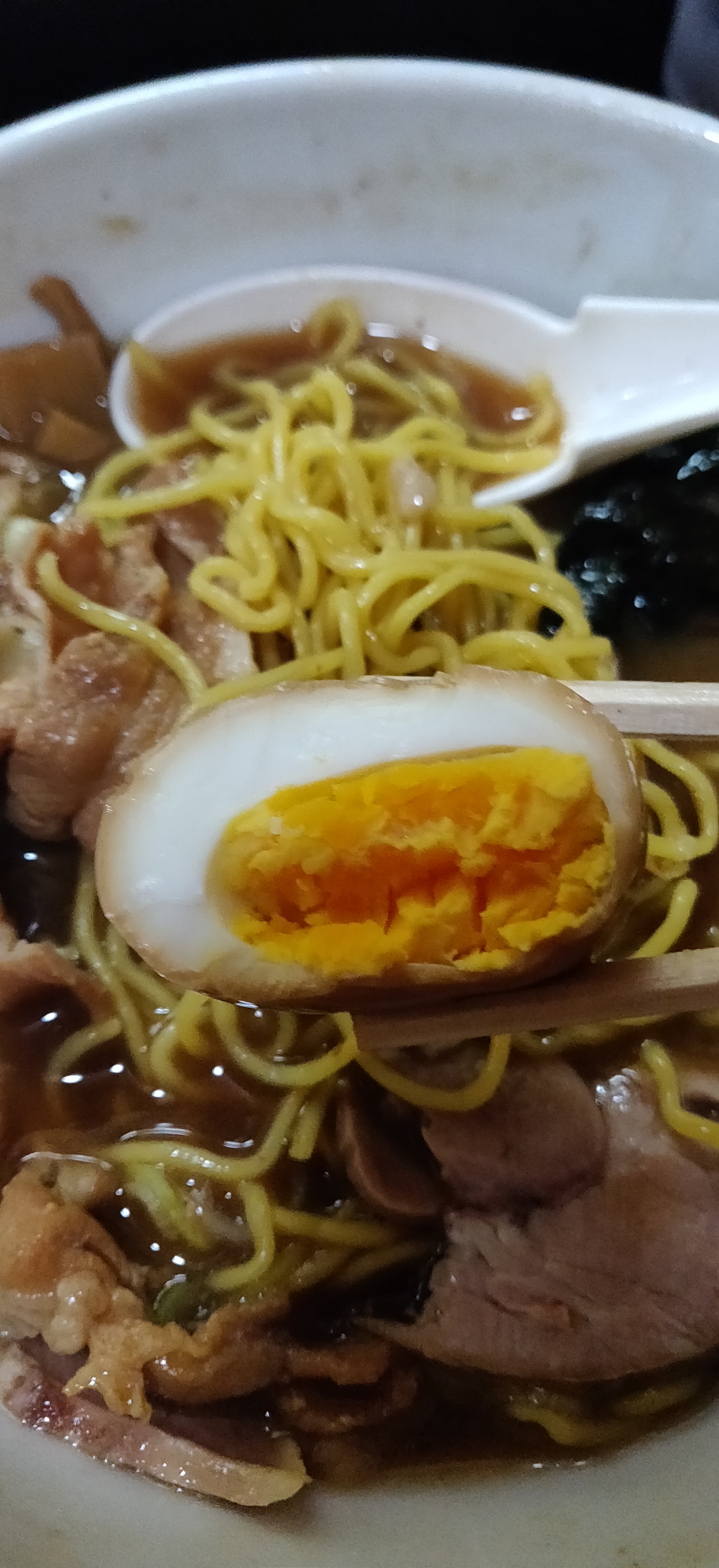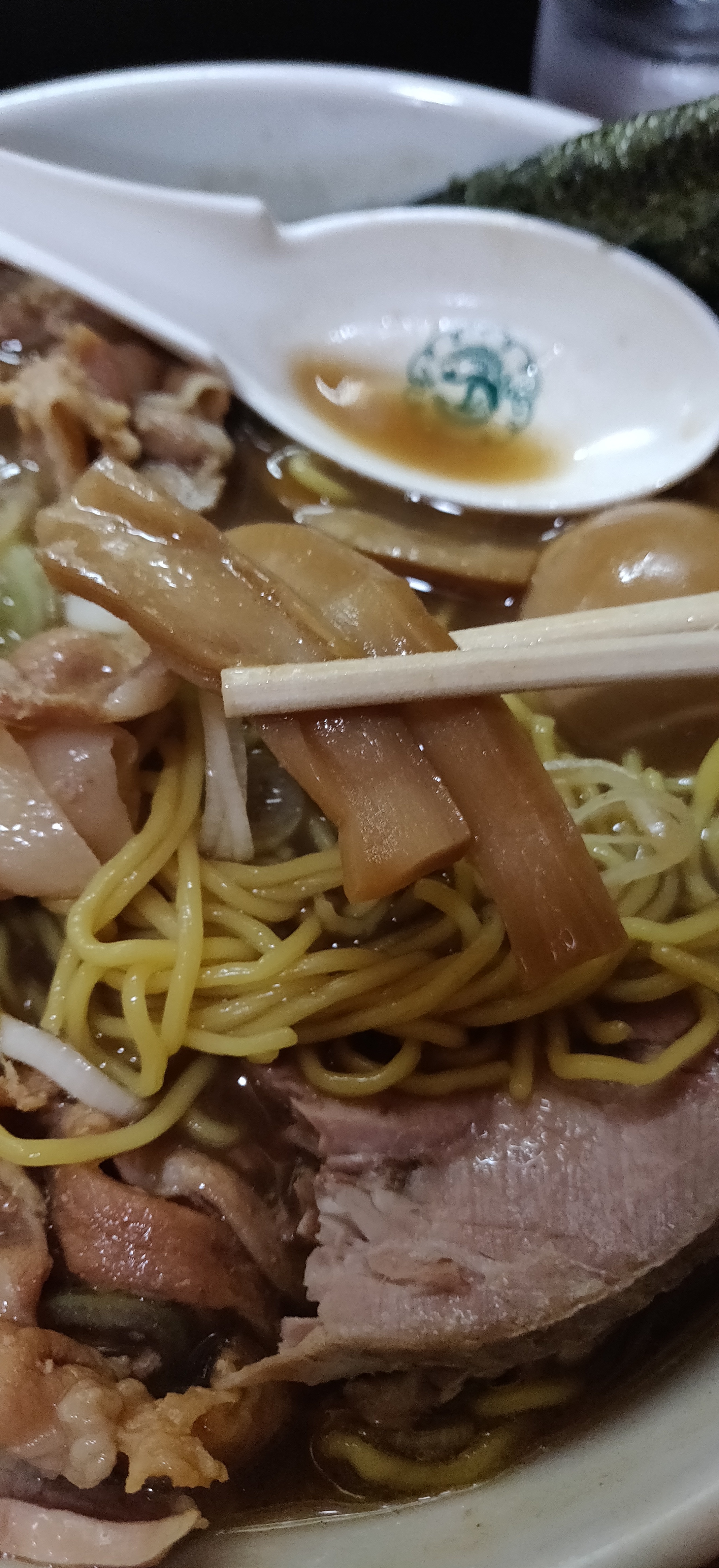Ichijyoryu Ganko Ramen Souhonken (一条流がんこラーメン総本家); Tokyo Ramen Fanatics' Favorite. Yotsuya
A lot of people tend to ask me what my recommendations are for ramen in Tokyo. I typically give answers based on the level of dedication and effort they want to put in to having each bowl. Most followers of my site are pretty big ramen fans so I usually go with the big hitters of Ramen Hayashida, followed closely with Ramenya Toybox, and finally Michelin Star winner Nakiryu. For my more advanced ramen lovers and those who don’t mind a bit of a trek, I’d recommend Menya Itto for some fantastic tsukemen and Chuka Soba Ibuki for the most intense Niboshi ramen money can buy. However, for the most insane, ramen obsessives, my recommendation goes to Ichijyoryu Ganko Ramen near Yotsuya station. It’s definitely not for everyone, and most casual ramen eaters might actually be off put by the bowls of ramen here, but if you obsess over each ingredient in the broth to the differing flavors from day to day variations in cooking, come to Ichijyoryu and geek out with the other fanatics waiting in line here. Some of the regulars will line up multiple times a day to try the different varieties the restaurant has to offer, and will do so multiple times a week. I’ve never went to a ramen shop before this one where so many of the patrons knew each other by name and shared photos of their weekly ramen while waiting in line. If you think you’re ready to step up to this intense level of dedication, make yourself to Yotsuya via the Chuo line on the JR railways, or through the Tokyo metro. Once at Yotsuya, you’ll have a bit of a walk along the main road before coming in to a residential side street that you wouldn’t expect a famous ramen restaurant to be….until you see the massive line within the corridors of a discrete red brick lined building. Be sure to come from Sunday to Thursday though as it is closed Friday and Saturday. Opening hours are 10 to 14:00 so they have a short opening time, but I can assure you its worth the trip there.
So the most intimidating aspect about this restaurant is the lack of menus. On top of that, the owner/chef has pretty limited English skills so I would read up on my explanation of their menu here before taking a seat at his counter. The different soups are as follows:
Jyo-hin: Chintan soup (light simmer broth), with a Shoyu flavoring tare. (上品: 清湯スープ。醤油味)
The Jyo-hin is the most recommended soup base for first timers and is similar to what a beef bone broth (Gyukotsu), pork, and chicken, shoyu ramen would be if compared to other ramen restaurants. The soup is very gentle, clean, and smooth and you can really taste the core base of the chef’s ramen.Gehin: Condaku soup (mixed broth). with one scoop of Shoyu flavoring tare. (下品: 混濁スープ。醤油タレ1杯)
Gehin is the ramen pictured above. In addition to the Jyo-hin chintan soup, the Gehin blends a variety of beef bones, pork, vegetables, and copious amounts of dried niboshi and other fish to create this incredibly complex soup. Not for the faint of heart and probably the most popular item on the menu.Akuma: Condaku soup (mixed broth), with one and a half Shoyu flavoring tare. (悪魔: 混濁スープ。醤油タレ1杯半)
Akuma, which directly translates to devil, is the saltier, more shoyu heavy version of the Gehin. If you want a nice salty kick, making you reach for a glass of water with every bite, this is the option.Hyaku (100): Condaku soup (mixed broth), with no flavoring tare, pure broth. (100: 混濁スープ。醤油タレ無し。ダシ100%)
Of the three Condaku soup varieties, this is the one that many regulars and ramen fanatics will have on a regular basis. Without any of the Shoyu seasoning tare, you can really focus on the intricacies of the different broths blended for the days’ soup. Since the quality and quantity of each ingredient differs daily, many regulars will order this one first to get a sense of how the soup is “behaving” that day.
In addition, you can also get Oomori, or extra noodles, for an extra 100 yen, and Tokumori, or extra large portion of noodles, for another 300 yen more. Ganko Ramen will also have special menu items when the owner/chef gets his hands on specialty ingredients so keep an eye out if you see a particularly long line at 10 am when they open. Last I heard, the specialty of the day was a suppon, or Japanese turtle, broth ramen that was apparently to die for. Still on the look out for my next chance at a specialty ramen from Ichijyoryu Ganko.
As I mentioned above, I decided on the Gehin ramen and honestly, I can see why its the most popular item. While the Chintan of the Jyo-hin will help you get an appreciation of the core roots of the chef’s ramen, the Gehin blows you away with the complexities involved in blending his broths together. The science behind the chef’s soup is both detailed and disorganized all at the same time. I’ve heard that if any broth remains from the previous day, he’ll add it in to the next day’s soup so that the flavors compound in addition to the new broth he makes. The broth consists of a collection of gyukotsu beef bone and pork femur bones lining the bottom of his stock pot, with a variety of vegetables to pull some sweetness, and the dried fish he uses is placed in strainers similar to the ones most ramen restaurants cook their noodles in so that it doesn’t blend in during the simmering process. What results is an organized chaos leading to some fantastic broth that changes daily. While you’re initially hit with the pungent, beef bone broth flavor, the soup is rounded out by the earthy shoyu tare seasoning that brings the umami of the fish broth together, combining the two to make one of the savoriest soups I’ve ever had. The sweetness of the vegetables (and I’ve heard some apples are used as well), help mellow out the overall flavor and keeps the soup light and refreshing, rather thick and heavy.
From the color and flavor, I’d guess that Ganko uses egg noodles with a high alkalinity. Even when soaked in the delicious broth, the noodles hold their shape and texture with each slurp bringing to your mouth the perfect ration of soup and noodle. Toppings are rather mundane, using the typical pork char siu, a bit overcooked hard boiled egg, some menma bamboo shoots, and a bit of spring onions. However, the shining star among the toppings is the pork belly slices reminiscent of Japanese Shouga-yaki, or ginger pork. Typically using slices of pork belly like this is uncommon in the more popular and well regarded ramen shops, but Ganko ramen has pulled it off spectacularly. While it looks like shouga-yaki, the seasoning is on the lighter side and while the ginger still kicks in, its nothing that distracts from the overall flavor of the ramen broth. I was a bit hesitant when I saw pictures of the ramen here because of the shoua-yaki, but I’m glad it didn’t deter me because this was one of my favorite pork toppings I’ve ever had.
The ramen here at Ichijyouryu Ganko Ramen looks quite disorganized and disheveled, but like the old adage says, don’t judge a book by its cover. Underneath the heaps of pork belly slices and overcooked egg hides an incredible ramen broth that competes with the best of them. Deep pork bone broth combined with the umami enriched fish flavors really makes you appreciate every bite and spoonful. Ramen is an art, and while the goal is to replicate your broth each and every day, sometimes its out of your control whether that is attainable or not. Rather than striving for that impossible goal, Ichijyouryu strives to make the best ramen you can with the given circumstances that day. I think this is what makes this shop so popular among the Tokyo ramen fanatics. The excitement of how the soup might differ in flavor keeps the regulars coming back for more and in turn attract new customers to keep the business running for so long. If you want to try a unique bowl of ramen that has captured ramen lovers from all around Tokyo, make your way to Yotsuya and check it out. At the very least, you’ll broaden your ramen palette and keep you hunting for more.

